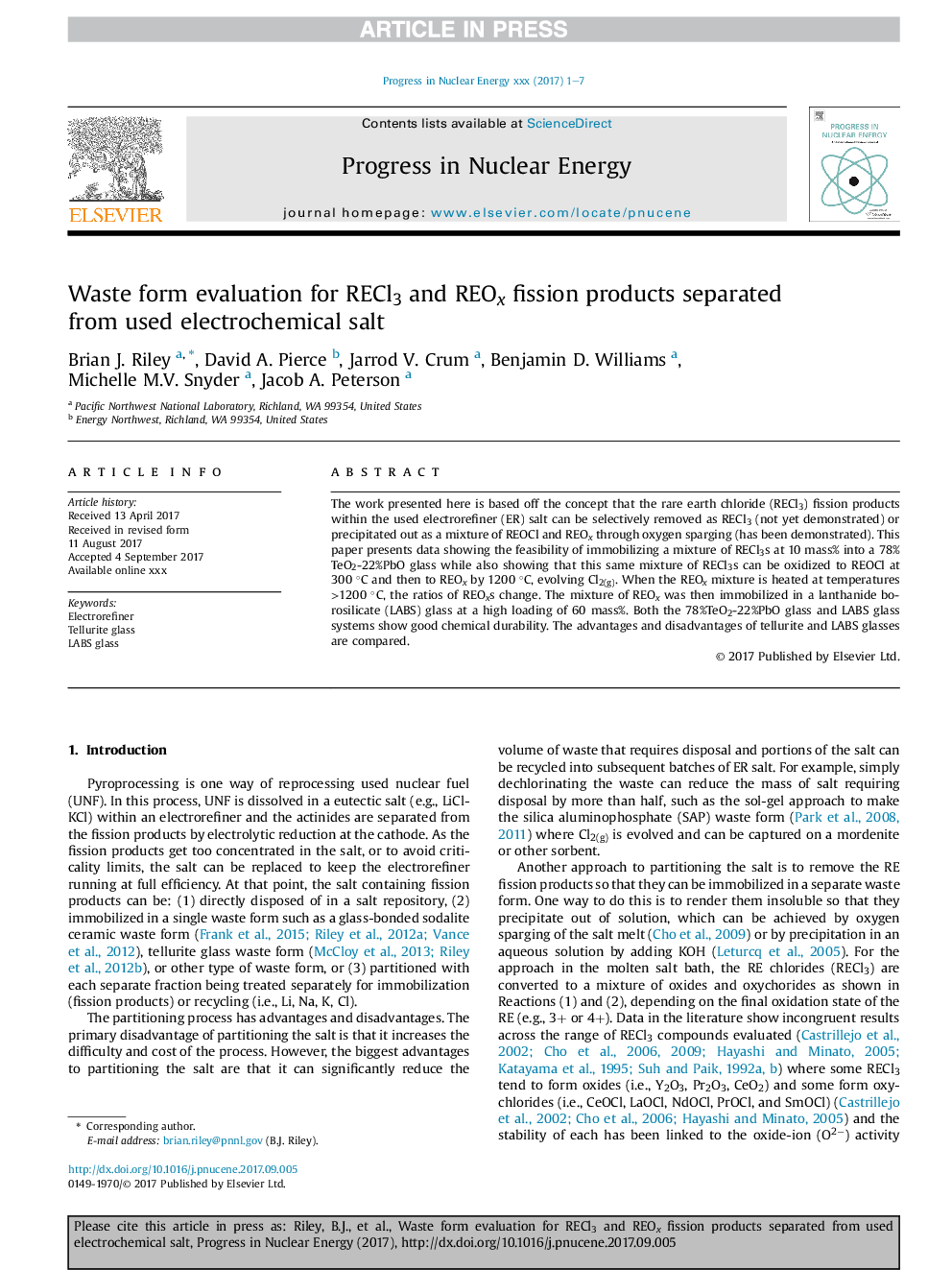| Article ID | Journal | Published Year | Pages | File Type |
|---|---|---|---|---|
| 8084406 | Progress in Nuclear Energy | 2018 | 7 Pages |
Abstract
The work presented here is based off the concept that the rare earth chloride (RECl3) fission products within the used electrorefiner (ER) salt can be selectively removed as RECl3 (not yet demonstrated) or precipitated out as a mixture of REOCl and REOx through oxygen sparging (has been demonstrated). This paper presents data showing the feasibility of immobilizing a mixture of RECl3s at 10 mass% into a 78%TeO2-22%PbO glass while also showing that this same mixture of RECl3s can be oxidized to REOCl at 300 °C and then to REOx by 1200 °C, evolving Cl2(g). When the REOx mixture is heated at temperatures >1200 °C, the ratios of REOxs change. The mixture of REOx was then immobilized in a lanthanide borosilicate (LABS) glass at a high loading of 60 mass%. Both the 78%TeO2-22%PbO glass and LABS glass systems show good chemical durability. The advantages and disadvantages of tellurite and LABS glasses are compared.
Keywords
Related Topics
Physical Sciences and Engineering
Energy
Energy Engineering and Power Technology
Authors
Brian J. Riley, David A. Pierce, Jarrod V. Crum, Benjamin D. Williams, Michelle M.V. Snyder, Jacob A. Peterson,
